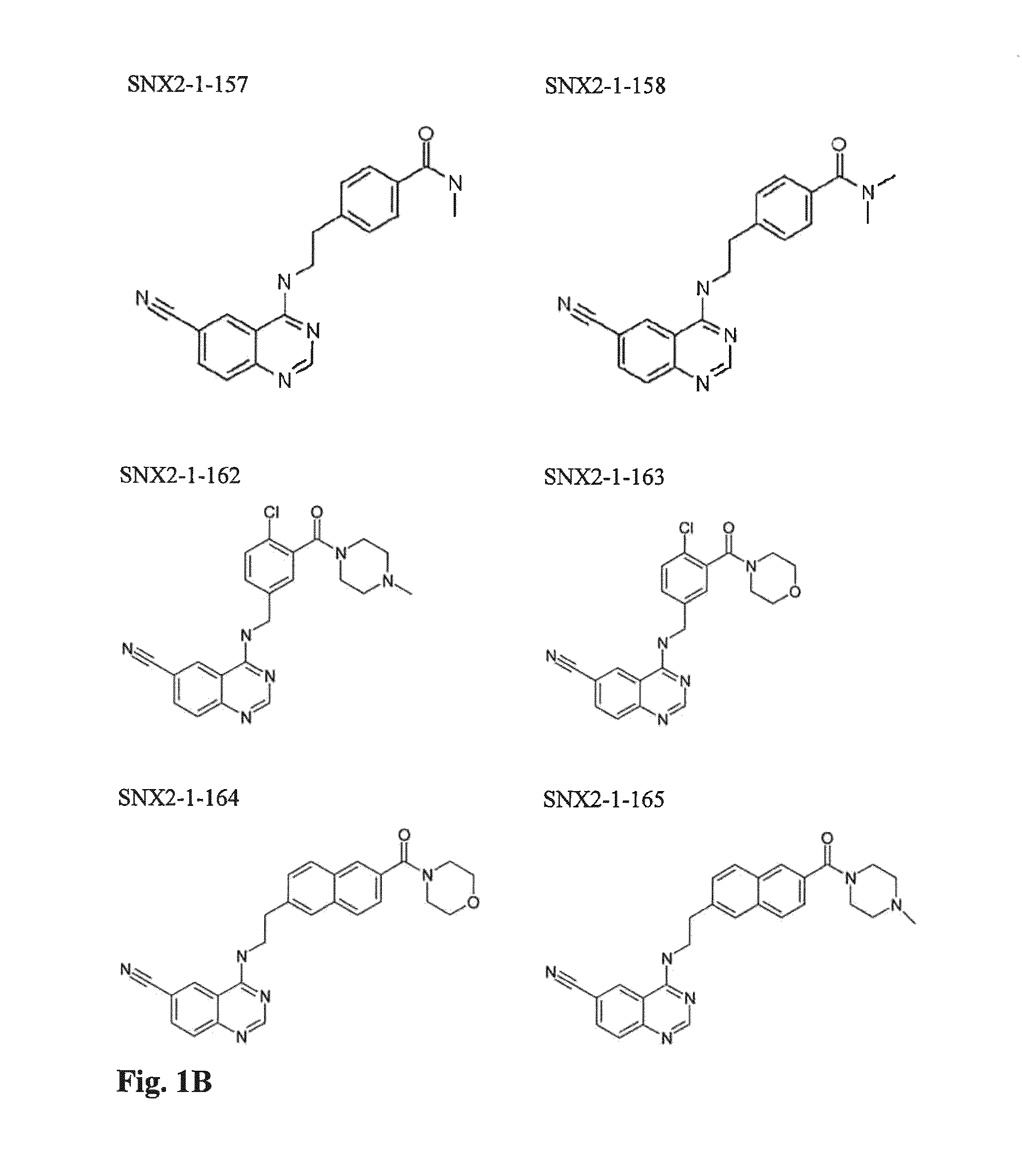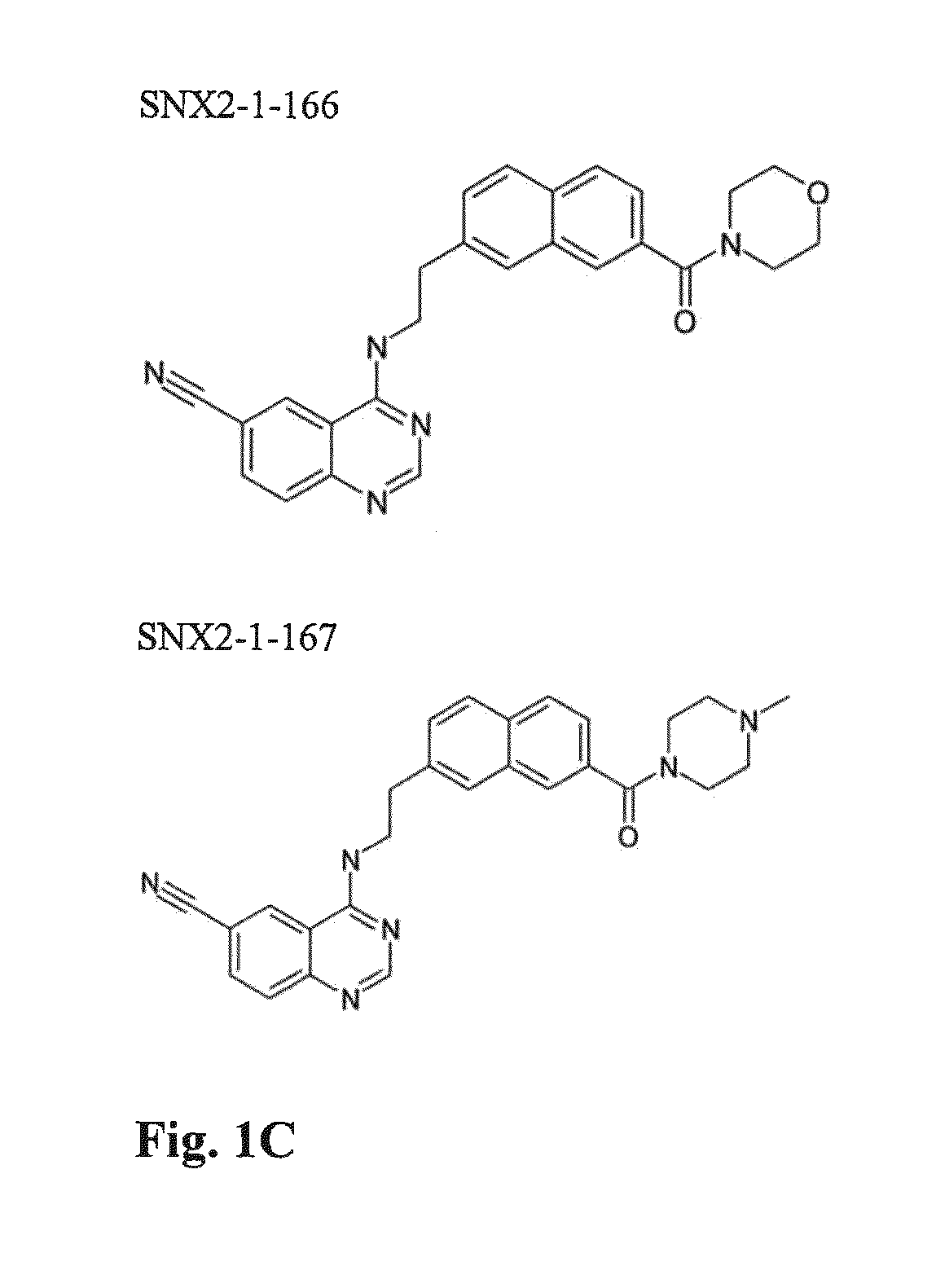CDK8-CDK19 selective inhibitors and their use in anti-metastatic and chemopreventative methods for cancer
a selective inhibitor and cancer technology, applied in the field of cancer treatment and prevention, can solve the problems of not offering mechanistic rationales for inhibiting cdk8 in cancer treatment, and achieve the effects of poor relapse-free survival, negative prognostic impact of cdk8 expression, and negative prognostic impa
- Summary
- Abstract
- Description
- Claims
- Application Information
AI Technical Summary
Benefits of technology
Problems solved by technology
Method used
Image
Examples
example 1
Synthesis of CDK8 / CDK19 Inhibitors
[0076]SNX-2-1-165 was synthesized according to the scheme shown in FIG. 2. All other compounds were synthesized using similar procedures.
example 2
Testing for CDKI Pathway Inhibition
[0077]The compounds described below are shown in Table 1 and the structures of some novel compounds according to the invention are shown in FIG. 1. Compounds SNX2-1-102, SNX2-1-108 and SNX2-1-145 were disclosed in U.S. patent application Ser. No. 12 / 956,420, and the other compounds were newly synthesized. All the compounds were tested for the ability to inhibit the CDKI pathway in a cellular assay described in our previous patent application PCT / US06 / 01046. This assay is based on the induction of green fluorescent protein (GFP) expression from the cytomegalovirus (CMV) promoter in human HT1080 fibrosarcoma cells that express CDKI p21 from an isopropyl-β-thio-galactoside (IPTG)-inducible promoter. The compound activity as a CDKI pathway inhibitor is measured by its ability to prevent the stimulation of the CMV promoter upon the addition of p21-inducing IPTG. CMV promoter activity is measured by the ratio of GFP fluorescence to the relative cell numb...
example 3
Solubility and Activity Testing
[0078]The compounds were also tested for solubility in 20% propylene glycol and in water, as follows. Compounds (dry powder) were dissolved in 20% propylene glycol at a concentration of 1 mM at a temperature of 40° C. with occasional vortexing. After 30 min, the solution was centrifuged at 10,000×g for 5 min. Serial dilutions of the cleared supernatant were prepared and used to measure the compound concentrations through OD reading, relative to 1 μM standard solution of the same compound. The results of the measurement were expressed as % solubility of the compound at 1 mM in 20% propylene glycol. To determine water solubility, the compounds (dry powder) were initially dissolved in water at a concentration of 100 mM at a temperature of 40° C. with occasional vortexing. After 30 min, the solution was centrifuged at 10,000×g for 5 min, and the formation of an insoluble pellet was monitored. At subsequent steps, the compound was attempted to be dissolved ...
PUM
| Property | Measurement | Unit |
|---|---|---|
| weight | aaaaa | aaaaa |
| temperature | aaaaa | aaaaa |
| pH | aaaaa | aaaaa |
Abstract
Description
Claims
Application Information
 Login to View More
Login to View More - R&D
- Intellectual Property
- Life Sciences
- Materials
- Tech Scout
- Unparalleled Data Quality
- Higher Quality Content
- 60% Fewer Hallucinations
Browse by: Latest US Patents, China's latest patents, Technical Efficacy Thesaurus, Application Domain, Technology Topic, Popular Technical Reports.
© 2025 PatSnap. All rights reserved.Legal|Privacy policy|Modern Slavery Act Transparency Statement|Sitemap|About US| Contact US: help@patsnap.com



